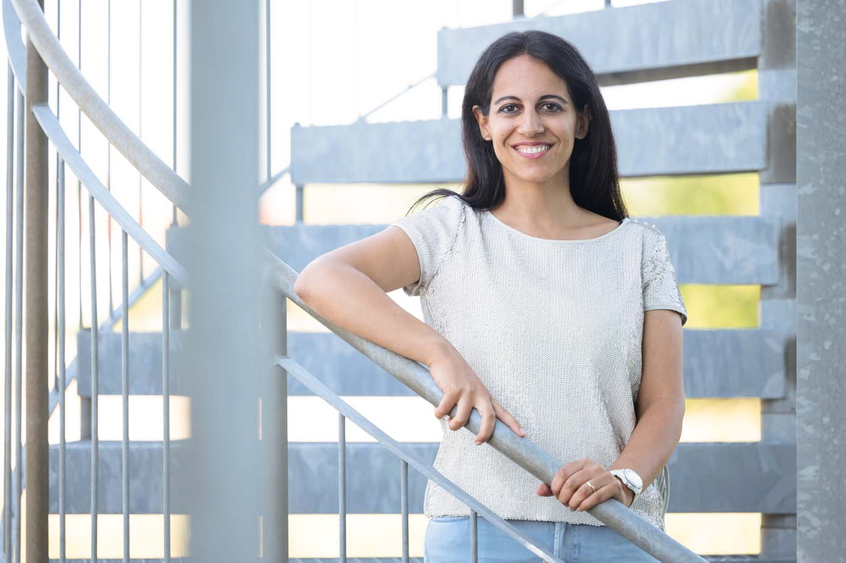Kurzprofil Assoz. Prof. Dr. Antonella Di Pizio
Life is the result of the chemical activity of molecules, and decoding the molecule structures and their interactions is the key to understand and modulate protein function and biological activities. The Molecular Modeling group aims to investigate biomolecular interactions using computational tools, focusing on the complex food effector systems and their chemoreceptor-mediated interactions. Because of the challenges the food system currently faces, computational tools are essential for developing the next-generation methodology for food design. Using molecular docking, molecular dynamics simulations, pharmacophore modeling, QSAR, machine learning and virtual screening, our group develops predictive models to search and rationally design new ingredients for food reformulation, but also support the development of new therapeutic approaches, with the ultimate goal of improving health and quality of life.
- Modeling chemosensory GPCRs to understand the molecular bases of ligand recognition and activation mechanism
- Developing structure-based ligand design protocols to identify new taste- and odor-active compounds
- Using chemoinformatics and structural bioinformatics approaches to investigate the combinatorial code of chemosensory perception
| 2023 – current | Associate Professor for Chemoinformatics and Protein Modeling at the Department of Molecular Life Sciences at the School of Life Sciences |
| 2018 – current | Leibniz-Institute of Food Systems Biology at the TU Munich, Freising, Group leader Molecular Modeling |
| 2013 – 2018 | Hebrew University of Jerusalem, Rehovot, Israel, Senior Postdoc Taste lab |
| 2009 – 2012 | University of Chieti, Italy, Ph.D. student Pharmacy, Drug Science Department |
| 2022 | Leibniz Best Minds Programme for Women Professors |
| 2020 | Visiting Professorship, University of Milano, Department of Food, Environment and Nutritional Sciences |
| 2019 | Platinum Manfred Rothe Excellence Award in Flavor Research, sponsored by Nestlé, 12th Wartburg Symposium (Eisenach, Germany) |
| 2013 | Bernardo Nobile doctorate award VIII Edition, by Area Science park (Trieste). |
| 2020 - | Working Group Leader [WG3] and Management Committee (MC) member (Germany representative) of the ERNEST Cost Action CA18133 |
| 2020 - | Editorial board member Frontiers in Molecular Biosciences |
| 2022 – | Modeling and simulations of Biological Macromolecules (WZ2235) |
| 2022 – | Drug and Protein Design (WZ2297) |
| 2020 – | Lecture & Seminar “Drug Discovery Chemistry” (CH0156), TU Munich |
| 2020 – | Lecture & Seminar “Introduction into Chemoinformatics and Bioinformatics for Food Scientists” (WZ1330), TU Munich |
(See ORCID for complete list)
1. Di Pizio A*, Nicoli A. In silico molecular study of tryptophan bitterness. Molecules 2020, 25(20): 4623-4632, doi: 10.3390/molecules25204623
2. Cooper KW, Brann DH, Farruggia MC, Bhutani S, Pellegrino R, Tsukahara T, Weinreb C, Joseph PV, Larson ED, Parma V, Albers MW, Barlow LA*, Datta SR*, Di Pizio A*. COVID-19 and the chemical senses: supporting players take center stage. Neuron 2020, 107(2): 219-233, doi: 10.1016/j.neuron.2020.06.032.
3. Leung N, Thakur DP, Gurav AS, Kim SH, Di Pizio A, Niv MY, Montell C*. Functions of Opsins in Drosophila Taste. Current Biology 2020, 30: 1-13, doi: 10.1016/j.cub.2020.01.068.
4. Dunkel A, Hofmann T, Di Pizio A*. In-silico investigation of bitter hop-derived compounds and their cognate bitter taste receptors. Journal of Agricultural and Food Chemistry 2020, 68 (38): 10414-10423, doi: 10.1021/acs.jafc.9b07863.
5. Spaggiari G, Di Pizio A*, Cozzini P*. Sweet, umami and bitter taste receptors: State of the Art of in silico molecular modeling approaches. Trends in food science & technology 2020, 96: 21-29, doi: 10.1016/j.tifs.2019.12.002.
6. Di Pizio, A, Waterloo, LAW, Brox, R, Loeber, S, Weikert, D, Behrens, M*, Gmeiner, P*, and Niv, MY*. Rational design of agonists for the bitter taste receptor TAS2R14: from modeling to bench and back. Cell. Mol. Life Sci. 2020, 77: 531-542.
*=corresponding author

